See A Martial Arts Festival! A Day Trip To Kashima Jingu And Sawara

If you love Japanese martial arts, check out the yearly Ancient Martial Arts Festival held at Kashima Jingu Shrine in Ibaraki Prefecture, just two hours away from Tokyo. This route also includes a visit to Sawara, a charming traditional town in Chiba.
Located in separate prefectures but united by history, Kashima (Ibaraki Prefecture) and Sawara (Chiba Prefecture) are two towns that offer visitors a look into ancient Japan. Join me on a day trip from Tokyo to the shrine dedicated to the deity of martial arts in Kashima and to the river city of Sawara which was once called little Edo (*1).
*1... Edo: The name of present-day Tokyo in the Edo Period (1603 - 1868).
Once a year, Kashima Jingu Shrine hosts the Festival of Japanese Ancient Martial Arts, an event featuring demonstrations of various martial arts. This year, the event was held on October 8th. It's an impressive, large-scale event, so it's worth well planning your trip to Kashima Jingu accordingly, to be able to witness this festival. Let me introduce you to how such a day trip would look like.
7:40 - 9:40 -- Bus from Tokyo Station to Kashima Shrine
Go to The Yaesu South Exit of Tokyo Station and head to bus stop No. 1. This is where the direct bus to Kashima Jingu departs from.
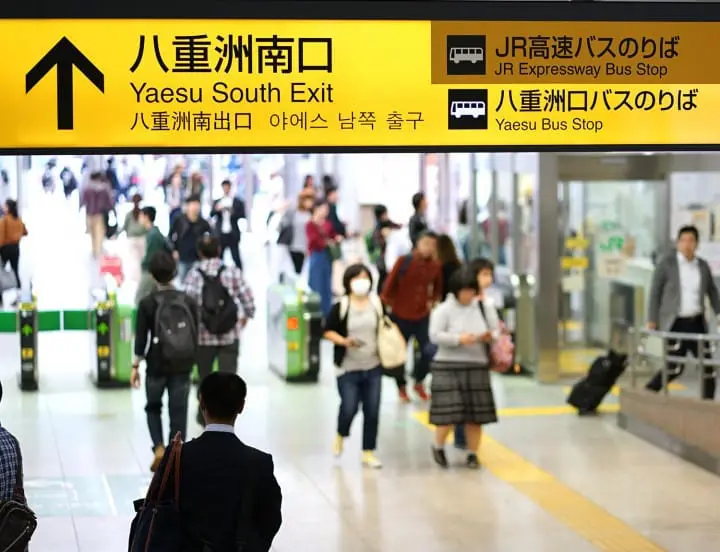
You can either buy the ticket for 1,830 yen at the JR Bus counter located on your right after exiting Tokyo Station or you can buy it as you board. Please keep in mind that you can't book tickets and seating is non-reserved.
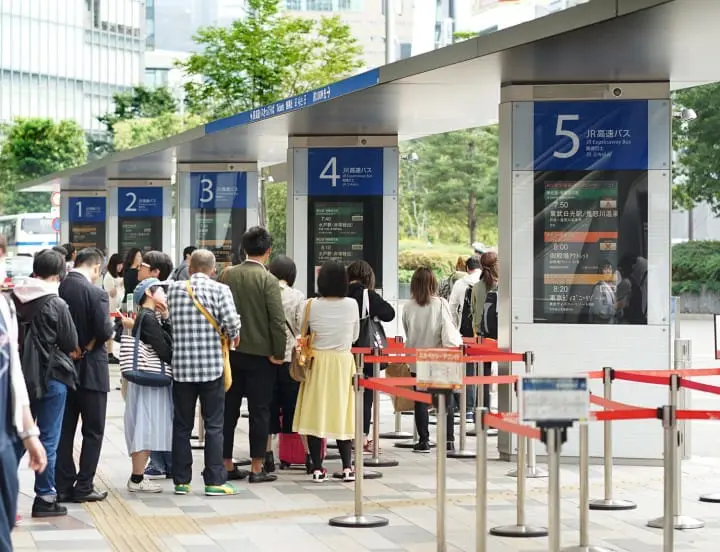
When you arrive at Kashima Jingu bus stop, walk back a little and take the first left on Sakura Machi. Next, walk straight for about 200 m until you see a big car parking lot with shops, taking you to the side entrance of Kashima Jingu Shrine.
10:00 - 11:00 -- Kashima Jingu - An Ancient Shrine Dedicated to the Deity of Martial Arts
Kashima Jingu Shrine was built around 660 BC by Emperor Jinmu to honor the god of martial arts Takemikazuchi no mikoto who helped him win many battles. Since ancient times, Kashima Shrine, along with Katori shrine in Chiba Prefecture and Ise Shrine in Mie Prefecture, have held the sacred and prestigious title of Jingu, which signifies that they have a connection to the imperial family.
Before you step between the two massive pillars of the grand torii gate at the entrance, it's respectful to bow because you are entering sacred realm.
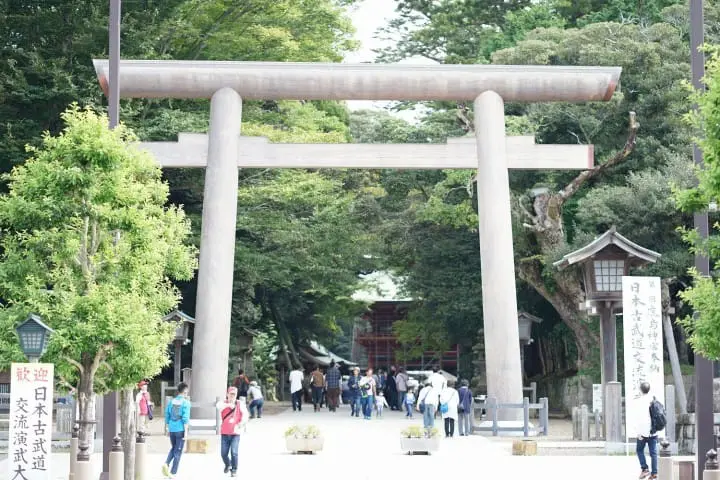
The original torii was built from granite in 1974 but it collapsed in the Great East Japan Earthquake of 2011. A new gate was completed in 2014 using four Japanese cedar trees from within the temple surrounds.
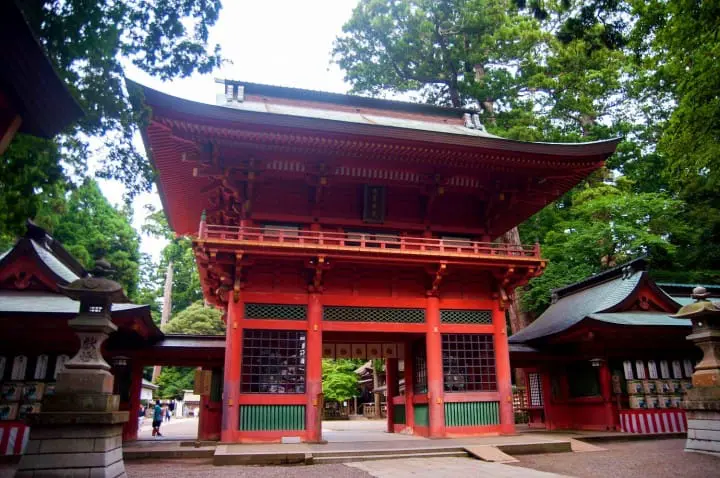
The red tower gate at the entrance to the shrine grounds, an Important Cultural Property, was built in 1634 and is 13 m tall. It is a beautiful monument so please do take a good look at it.
11:00 - 12:00 The Ancient Martial Arts Festival Held Yearly at Kashima Jingu
The deity of martial arts, Takemikazuchi no mikoto, is enshrined at Kashima Jingu. As such, it's not surprising that this city has bred fine warriors including the legendary swordsman and founder of the Kashima Shintoryu style, Tsukahara Bokuden.
The Ancient Martial Arts Festival held yearly at Kashima Jingu contains a series of martial arts demonstrations which give one the chance to appreciate the awesome god-like skills of masters and practitioners from many disciplines across Japan.
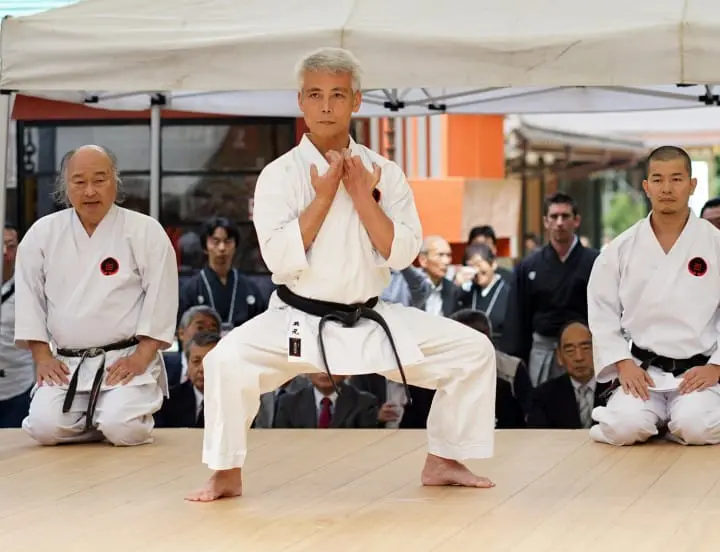
Masakazu Kuramoto, representative of the Okinawa Gojuryu, performs a kata, a pattern of movements that require great concentration and dedication to reach perfection.
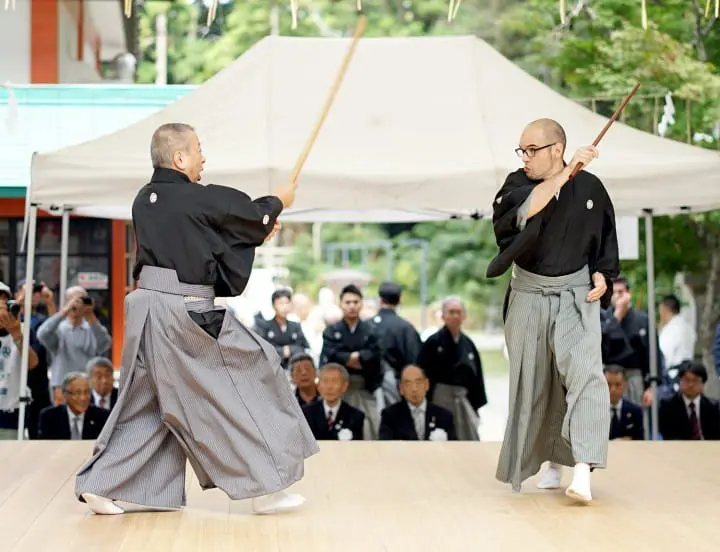
Haruji Yoshihara (left) and Adrian Jukel of Hyoho niten ichi, a prestigious school of swordsmanship, battle it out.
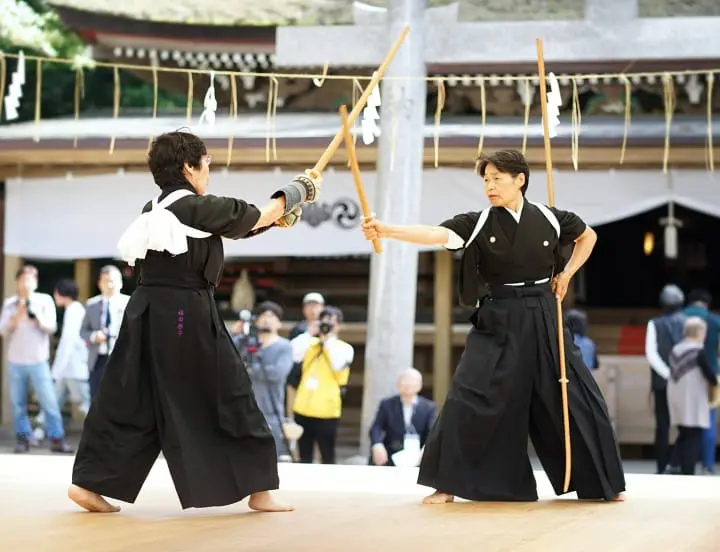
Keiko Fukuda (left) of the Tendoryu Naginatajutsu deflecting a would be blow to the head. Naginata is a weapon which is a long staff with a bladed tip.
In 2000, the Japanese Budo Council established that Japanese Martial Arts are based on the tradition and spirit of Bushido – the way of the warrior. This serves to systemize and preserve the many forms of martial arts in Japan and help practitioners contribute to the peace and prosperity of the nation through home-grown martial arts: jūdō, kendō, kyūdo, sumō, karatedō, aikidō, shōrinji kempō, naginata, and jūkendō.
The Ancient Martial Arts Festival held yearly at the beginning of October at Kashima Jingu Shrine is an excellent opportunity to see demonstrations of these arts at one time. If you travel to Japan in October, do plan a trip to Kashima Jingu to see this impressive event.
The Sacred Forest around Kashima Shrine
When you step into the naturally formed forest that leads to Okunomiya Shrine, the hall where the patron deity is enshrined, the fresh air and gentle breeze from the cedar trees will ease your mind. This power spot is a tranquil place where you can contemplate, pray and find peace - even for a brief moment - in a busy world.
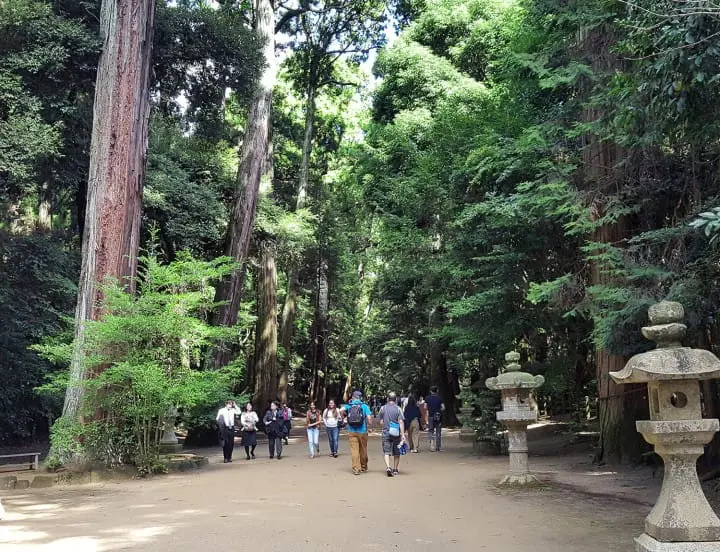
The Mitarashi Pond, located in the precincts of the shrine, holds about 400,000 liters - about the size of a 25m pool - of spring water. It's so clear that you can see the bottom of the pond and see through the eyes of the koi fish swimming.
At the beginning of each year, as many as 200 people enter the freezing pond as part of a Shinto tradition of purification of the body. Legend has it that for those who stepped into the pond as part of the ceremony for entering the Shinto priesthood, the water would remain at chest-height for both an adult and a child.
Other places of interest around the shrine include the deer park, Kanameishi - the sacred rock believed to be protecting the country from big earthquakes, and the treasure hall housing Japan’s oldest and longest (3 m) straight sword produced around the 5th century.
After exploring the precincts of Kashima Jingu and taking in its sacred atmosphere, let's head to our next destination for today, Chiba Prefecture's Sawara district.
13:00 - 13:44 -- Heading from Kashima to Sawara Station
Kashima Shrine is 7 minutes away on foot from the Kashima Jingu Station. Go back to the torii and continue to walk straight until you see the first traffic lights, then turn right and walk all the way down until you see Kashima Jingu Station.
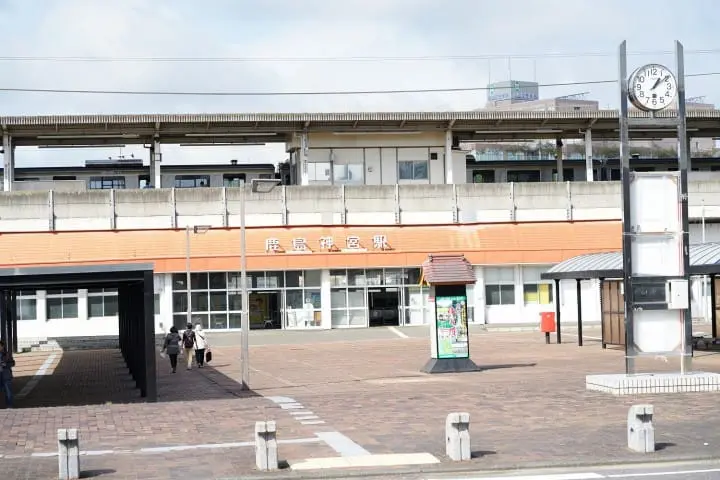
Buy a 320-yen ticket for Sawara Station using the vending machine. The 20-minute ride has great views of Chiba's landscapes on both sides. If you take the 13:23 train to Sawara, you will be there at 13:44.
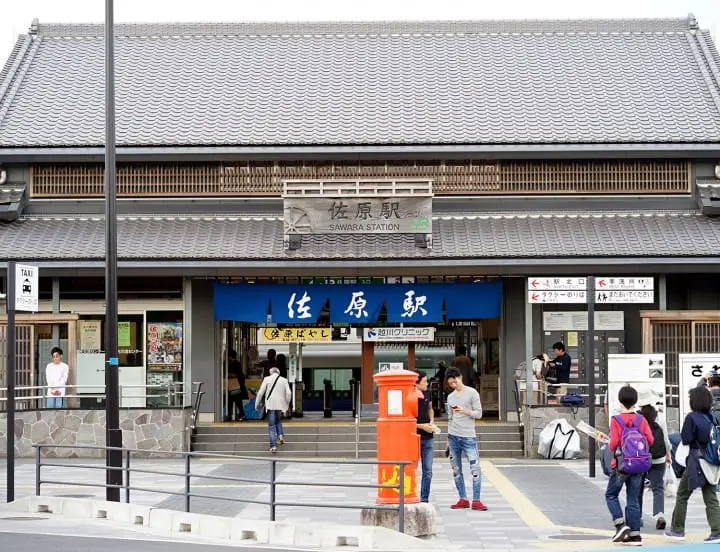
The tourist information center is two minutes straight ahead from Sawara Station. You can grab English brochures there.
14:00 - 15:00 Lunch at Sunrise Ranch
Although grilled eel (kabayaki) is popular in Sawara, it would be foolish not to try the pork cutlet (tonkatsu) which was even featured on Japanese TV. From the tourist information center, turn right and look across the street to find the Sunrise Ranch. This restaurant serves tonkatsu that is so tender you could rest your head on it and go to sleep.
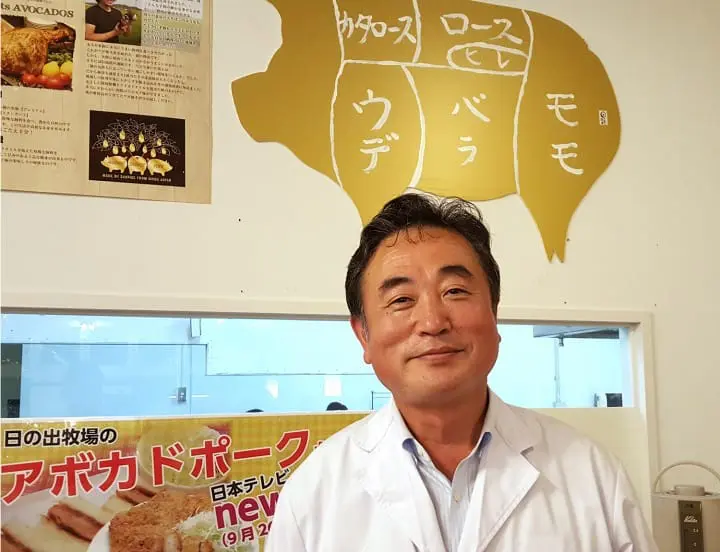
Earlier we met masters of martial arts, now meet the master of the culinary art. I asked owner Kunihiko Takagi about the source of his inspiration. "I have always loved Tonkatsu!" he explained with a smile. That was enough for him to set out to create the softest tonkatsu in town.
The secret of his technique involves mixing Mexican avocado oil with (believe it or not) pig feed! According to the maestro, this is the key ingredient that tenderizes, lowers cholesterol and helps prevent arteriosclerosis because of the high oleic acid content. All I know is that it tasted sublime.
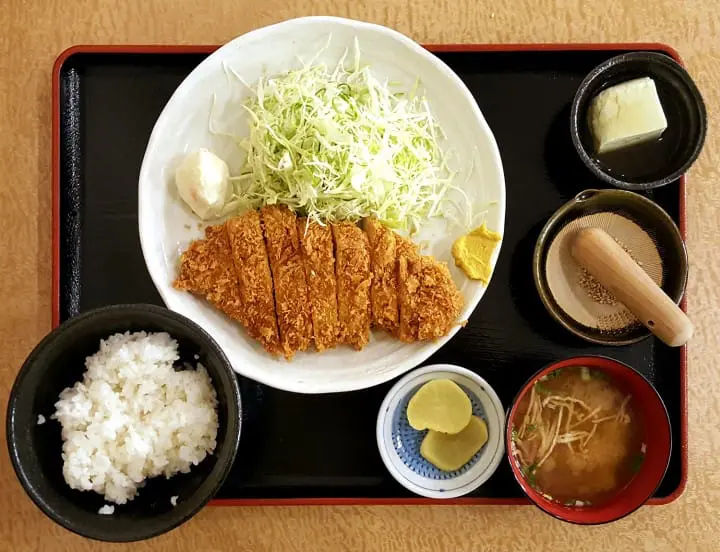
For 1,000 yen, the most popular set meal in the shop is called Avocado Sunrise (AS) Black Pork. Other popular dishes are AS steak pork and special AS grilled pork, also for 1,000 yen.
Sunrise Ranch has a shop inside which is open from 10:00 to 17:00. The restaurant is open between 11:00 and 15:00, and from 11:00 to 18:00 during festivals. An English menu is available and there is free Wi-Fi, but be warned - as with most shops in Japan - that you can pay by cash only here.
15:00 - 16:00 Suigo-Sawara Museum of Festival Floats
The "dashi" is a float that is pulled along the streets by dozens of locals during festival parades, adorned with colorful figures such as five-meter tall dolls, mountains, fish, birds, spears, animals or plants. The word 'dashi' referred to an earthly place onto which the gods descended.
A great place to learn more about festival floats is the Suigo-Sawara Museum of Festival Floats, located 15 minutes away on foot from the station. It opens from 9:00 - 16:00, and costs 400 yen for adults or 200 yen for children.
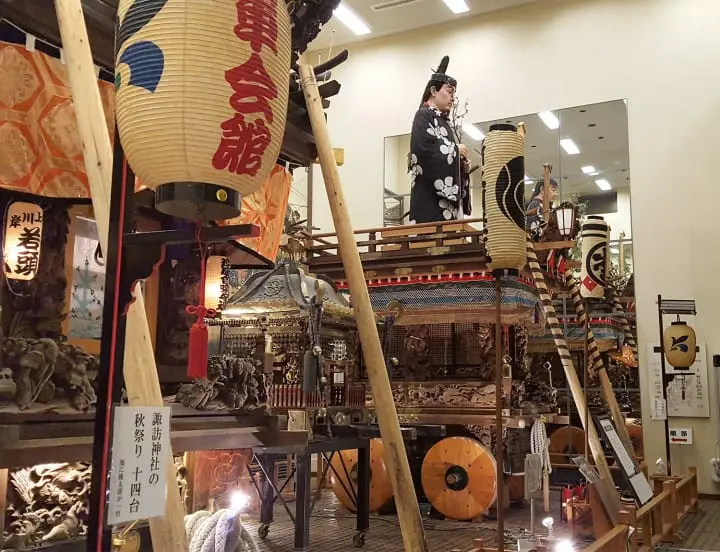
Inside the festival float exhibition room, you can examine festival floats and their adornments and truly appreciate the workmanship - a typical Japanese virtue - that goes into their construction.
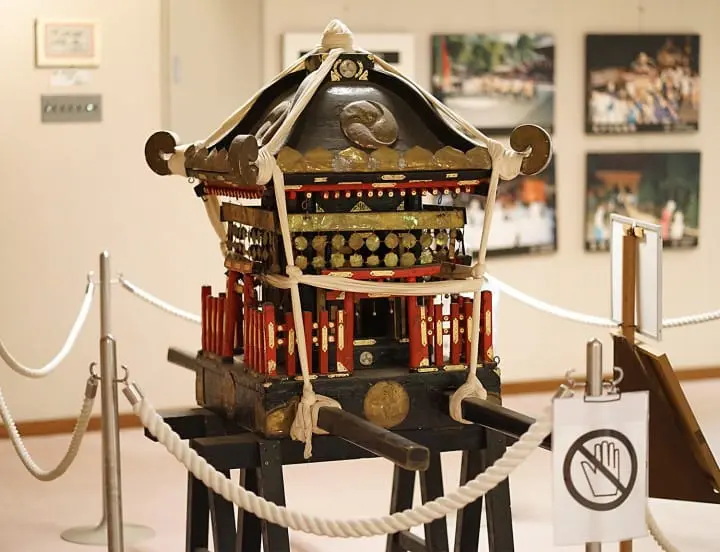
Dashis are considered to be miniature shrines for gods to ride inside during religious festivals. Look closely and you’ll see small red torii gates surrounding all four sides of each float.

On the 3rd floor, you can see the oldest of the large dolls, created in 1739. This one is a tengu, an imaginary red-faced human creature with magical powers, ilustrated with a protruding nose and bird-like wings.
16:00 - 16:58 Stroll around Sawara - A Japanese Heritage Site
Known as "Ko-edo" or little Edo, Sawara is famous for its once prosperous harbour which has been preserved so that new generations can admire and appreciate traditional Japanese architecture. Walking around the streets weathered with years, you can still find some of the original shops and warehouses still in business. New shops are still designed to match the traditional and nostalgic Edo atmosphere.

The spirit of the locals has helped maintain the town's vitality and this is especially evident along Ono River where the buildings still have the look of the Edo of old.
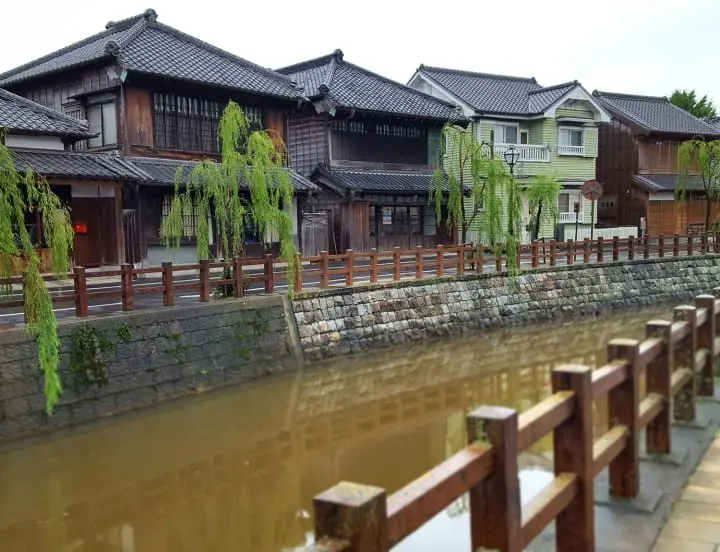
In 1996, the Sawara district was designated by the Japanese government as the first preserved district in the Kanto Region.

Look out for the short street lamp posts along Ono River as each one has different and unique displays which only enhance the charm of this old merchant town.
Don't Forget to Look for Local Souvenirs
Fancy fine tea leaves (sencha) to give as souvenirs? Then head over to Otakaenchaho, two stores down from Chukei Bridge.
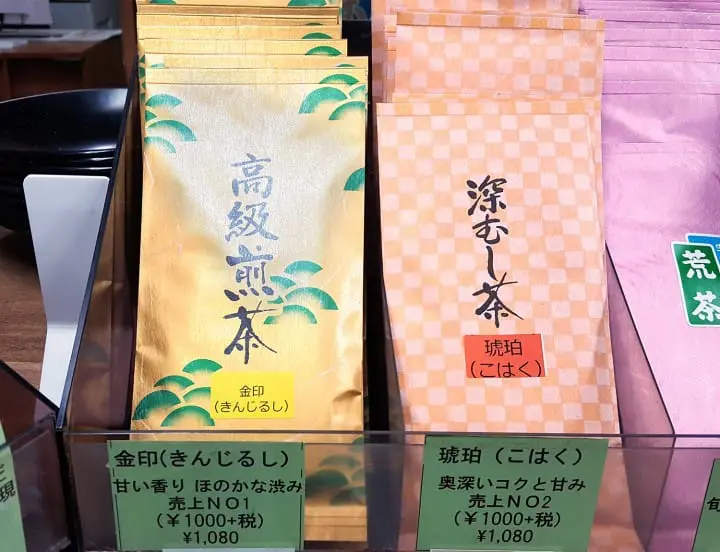
The 11th owner of this shop built in 1765 recommends the high-quality sencha, sweet-smelling tea leaves from Kagoshima and Shizuoka prefectures, as well as fukamushi-cha from Sayama in Saitama, which has a mild taste. Both are 1,080 yen for 100g of high-grade tea. The shop opens 8:30 – 19:30.
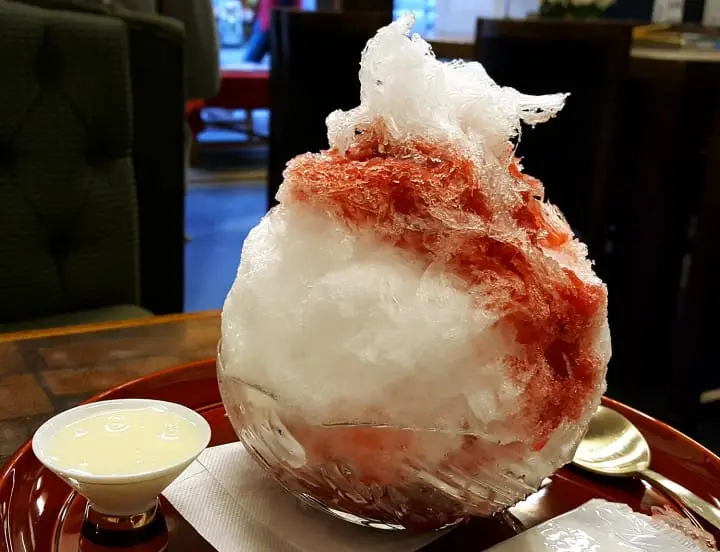
On a warm autumn day, go to the café near Chukei Bridge called Hana Kanmuri and try its seasonal best seller – a massive ball of shaved ice with raspberry syrup inside and on top. For added sweetness, do as the locals do by adding condensed milk. Besides this 1200 yen treat, the shop also sells sandwiches, rice cakes, and coffee. Hana Kanmuri opens 10:00 – 17:00 every day except on Mondays and Tuesdays.
17:05 - 19:00 Bus from Sawara to Tokyo Station
The bus comes once every hour so be sure to arrive at least 20 minutes before the departure time to line up. Remember, it's first-in-first-serve.
These are the afternoon times for buses heading to Tokyo: 16:05, 17:05, 18:05, 19:05. The bus stop is on the other side of the station. As you walk towards it, there'll be a footbridge on your left. Take that to get to the other side and as you get down, you'll see a huge carpark on your right. Keep walking straight and you should see a small bus stop with "3" on it. You will have to pay 1,750 yen for the ticket as you get on the bus.
Have a Great Time in Kashima and Sawara!
The fans of Japanese martial arts and shrines will most surely enjoy this trip to Kashima Jingu, one of the most prominent shrines in eastern Japan, famous for its martial arts tradition, as well as the charming traditional townscape of Sawara.
Kashima Jingu - Sawara Route Summary
Tokyo Station → Kashima Jingu → Sawara Station → Suigo-Sawara Museum of Festival Floats → Tokyo Station
Transportation expenses: 3900 yen.
Lunch, snacks, souvenirs: around 3000 yen.
Supported by The Three Cities in the Suigo district(Katori, Kashima, Itako)
Celebrating culture with words, photos and stories.







































![[Yamanashi/ Hokuto City] 4 Hot New Spots Opening in 2026](https://resources.matcha-jp.com/resize/720x2000/2025/12/12-252747.webp)



